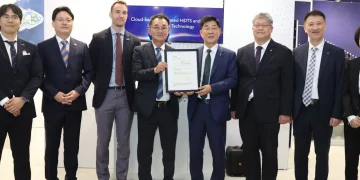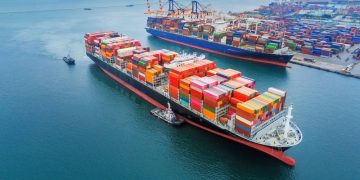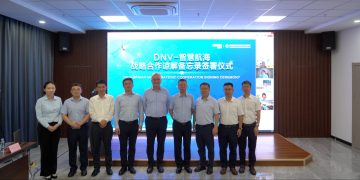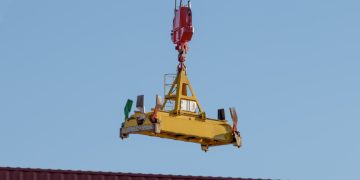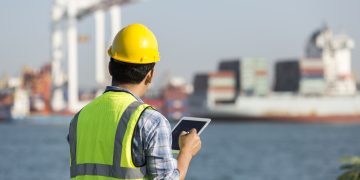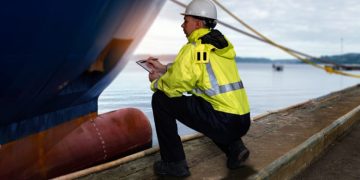According to Trafigura, green e-fuels produced from renewable energy could be produced in abundance in the developing countries of the Global South.
As explained, the industry’s current goal of reducing total annual GHG emissions by least 50 percent by 2050 compared to the 2008 baseline, is not ambitious enough to meet the immense climate challenge.
The International Maritime Organization (IMO) has an essential role to play in this regard, as the de facto global regulator of shipping.
According to the company, by agreeing and implementing ambitious science-based decarbonisation targets in its revised GHG Strategy, the IMO can accelerate the development of low- and zero-emission fuels and attract the investment needed to overhaul the infrastructure of the global shipping industry and retrofit or build a fleet of ships.
Margaux Moore, head of energy transition research and investments at Trafigura, and global fuel decarbonisation head Rasmus Bach Nielsen estimated that the Global South could produce 4,000 exajoules of competitively priced green hydrogen.
With the right policy settings, we see large potential for producing two of these fuels – green ammonia and green methanol – in countries with access to abundant solar energy, wind power and land.
…the report said.
At the same time, we see significant potential demand for low-emission fuels by the end of the decade, which should give shipbuilders, owners and project developers the confidence they need to invest in shipping decarbonisation.
…added.
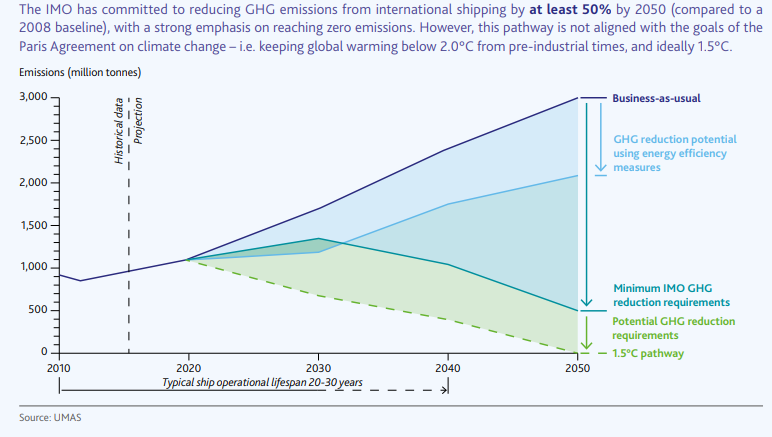
According to the report, there is a pressing need for the IMO to introduce a mandatory carbon levy by 2025 to address the price gap that exists between the fuels currently sed to power ships and hydrogen-derived alternatives.
Fuels of the future
As explained, there are several ways the shipping industry can replace oil-derived bunker fuels with cleaner alternatives.
In this whitepaper, Margaux Moore and Rasmus Bach Nielsen, have chosen to focus on shipping fuels derived from green hydrogen, which is produced from the electrolysis of water using renewable energy. These so-called electrofuels include ammonia and methanol.
Hydrogen as a feedstock
Hydrogen made from natural gas is already widely used in industrial processes. It can also be used to power ships with modified internal combustion engines. However, hydrogen has a low volumetric energy density and is hard to compress. Even in liquid form, its energy density is low compared to alternative shipping fuels. As such, a large amount of space is needed on board a ship to store hydrogen.
Methanol
Shipped globally for over a century, methanol is a clear liquid alcohol, which is water soluble and with lower toxicity to marine life compared to other potential shipping fuels. Its main current use is in the production of industrial chemicals, including formaldehyde and acetic acid.
Ammonia
Ammonia, like methanol, is already a globally traded commodity. It is one of the feedstocks needed to make fertiliser and annual global production is around 185 million tonnes. It is typically produced by combining nitrogen from the air with hydrogen derived from natural gas, through the Haber-Bosch process.
It can also be made using green hydrogen, making ammonia a potential low-emission shipping fuel.
In summary, this research shows that there is the potential to produce large volumes of renewable hydrogen and, by extension, electrofuels in the Global South.
When it comes to decarbonisation, the shipping industry has a lot more to do. The IMO should set emission reduction targets for 2030 and 2040 that are aligned with a 1.5 degree temperature goal and strive to achieve at least net zero by 2050.
..said Rasmus Bach Nielsen, Global Head of Fuel Decarbonisation at Trafigura.
It must also agree and implement a price on carbon by 2025. That’s an absolute must to give shipowners the confidence to order new vessels capable of running on low-emission fuels.
…added.
Furthemore, in an exclusive interview to SAFETY4SEA, Mr. Andrea Olivi, Global Head of Wet Freight for Trafigura, revealed their strategy for the next five years, highlighting that sustainability remains at the top and that the green ammonia will play vital role in industry’s journey towards decarbonization.



















